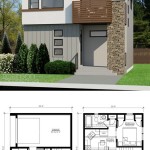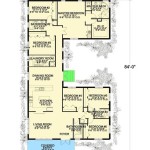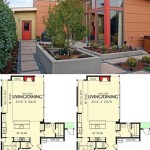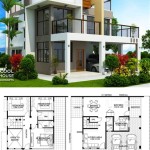Japanese house plans have become increasingly popular over the years, as people have come to appreciate the unique beauty of traditional Japanese architecture and the principles of simplicity and minimalism. Whether you are looking for a new home or simply want to add a touch of sophistication and style to your current one, Japanese house plans can provide a great starting point.
Exploring the Different Types of Japanese Houses
Japanese house plans can vary from traditional to contemporary styles, depending on the needs of the homeowner. Traditional Japanese homes, or “minka,” are typically two-story, single-family homes with a symmetrical layout, steeply pitched roofs and a gabled entrance. These homes usually feature central courtyards, tatami mats, sliding doors, and low-to-the-ground seating. Modern Japanese homes, or “shin,” are typically one- or two-story homes with a contemporary look and feel. These homes typically feature open living spaces, high ceilings, and large windows that let in plenty of natural light. They also often feature bright, neutral colors, natural materials, and plenty of built-in storage.
Understanding the Principles Behind Japanese House Plans
Japanese house plans are based on the principles of simplicity and minimalism. These principles dictate the use of natural materials, the incorporation of nature into the design, and the use of open spaces to maximize natural light and air flow. Japanese house plans also often feature a focus on connecting the inside and outside of the home. This is achieved through the use of outdoor spaces, such as gardens, courtyards, and terraces, as well as large windows and sliding doors that open up to the outdoors.
Tips for Designing Your Japanese House
When designing your Japanese house, there are a few key elements to keep in mind. Make sure to incorporate plenty of natural materials, such as wood, stone, and bamboo. This will help to create a sense of harmony between the indoors and outdoors. Also, be sure to take advantage of the principles of simplicity and minimalism. Utilize built-in storage, avoid clutter, and use open spaces to maximize natural light and air flow. Finally, think about how you can connect the inside and outside of your home by utilizing outdoor spaces, such as terraces, courtyards, and gardens. By following these tips, you can create a beautiful home that is based on the principles of traditional Japanese architecture. With the right planning and design, you can create a home that is both stylish and functional.















Related Posts








